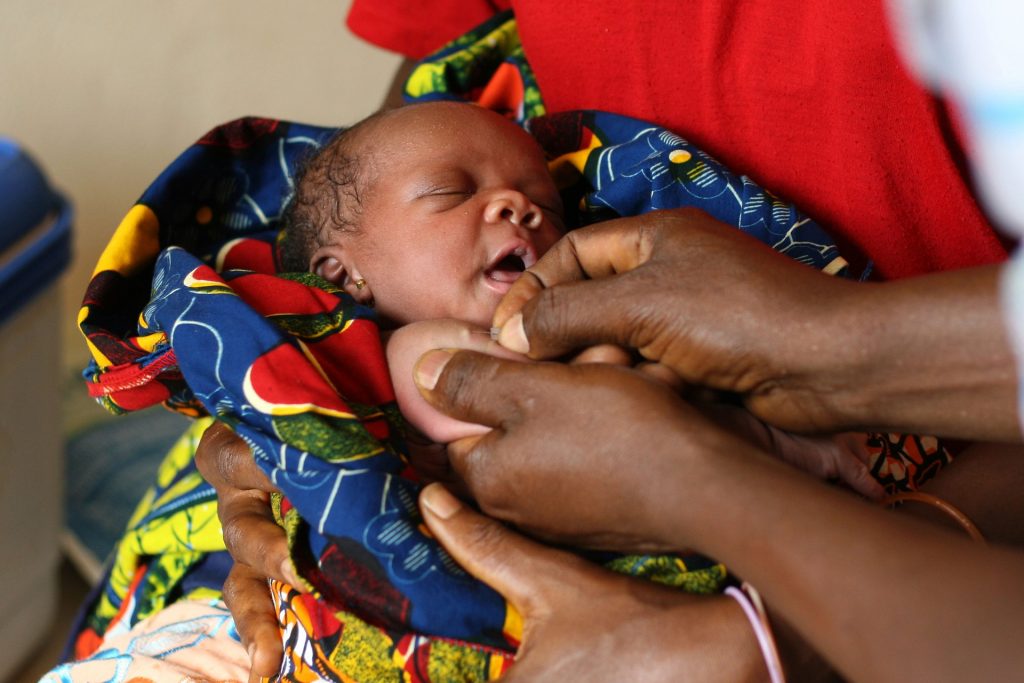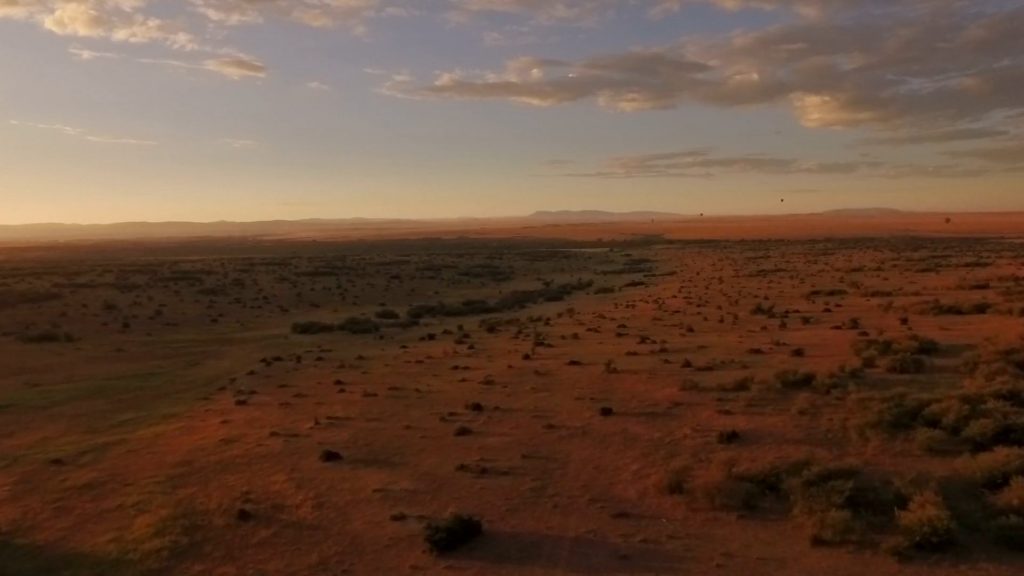Some are killing machines. Others are pesky passions of the weekend hobbyist. As such, drones have not always been welcomed in our skies.
Across Africa, however, projects are being launched that could revolutionise medical supply chains and commercial deliveries, combat poaching and provide other solutions for an overburdened, underdeveloped continent.
In Rwanda, as in many other African countries, the rainy season makes already difficult roads between smaller towns and villages all but impassable. Battered trucks struggle through the mud, and in some cases even more agile motorbikes and foot traffic are unable get through.
“Rwanda is essentially a rural country. Lots of blood products cannot be stocked at every health centre. At best it can take four to six hours to get supplies through,” says the technology minister, Jean Philbert Nsengimana.
“For mothers giving birth, postpartum haemorrhaging, or bleeding post-delivery, happens quite often. It may not be possible to prevent. Then what is needed is a quick and rapid intervention.”
Enter Zipline, a California-based robotics company which has designed a fixed-wing drone to deliver medical essentials to rural health facilities. The “zip” – with a two-metre wingspan – releases a small, parachute-equipped payload that drifts down into a dropzone without the zip having to land.
“This technology has the potential to erase barriers to access for countless critical medicines and save lives on a scale not previously possible,” says Keller Rinaudo, Zipline’s chief executive, which is staffed by experienced aerospace engineers including those who have worked at SpaceX, Boeing and Nasa.
“While there are a number of potential applications for this technology, we’re keenly focused on using it to save lives.”
In its first phase, Zipline plans to make 50 to 150 deliveries of blood a day to 21 transfusing facilities within a 47-mile (75km) radius, later adding vaccines and other urgent supplies. Each zip, operating from bases called nests housing 15 autonomous devices, can fly a 75-mile round-trip on a single battery charge, including in wind and rain.
It is still early days – daily medical flights are scheduled to begin in late August or early September after safety testing is complete – but if Zipline succeeds in its goals, it will place Rwanda far ahead of many of the world’s richest economies in terms of its vision of a drone delivery network.
“For these drones to operate and share the airspace with normal aircraft, a lot of work has gone into legislation and airspace management – there are no precedents, we are creating something from scratch,” says Nsengimana.
“Most countries have legislation for drones that remain visible. But for fixed-wing drones that go beyond the line of sight, we found no regulation.”
Rwanda is the first government to sign a contract with the Silicon Valley startup to provide nationwide delivery services – the jury is still out as to how this will play out at a national scale, in conjunction with health providers and over longer distances.

Photograph: Alamy
The cost implications remain slightly unclear, although at Zipline’s Kigali launch on the sidelines of the World Economic Forum on Africa, Rwanda’s health minister, Dr Agnes Binagwaho, insisted that they were comparable to current delivery methods.
And Zipline, a for-profit entity, hopes other countries will follow in Rwanda’s footsteps. The global vaccine alliance Gavi and UPS Foundation – both Zipline backers – echo this optimism, as do several large tech donors that have funded the company.
Rwanda seems like a preferred spot to test drone models – a small country but with challenging terrain, often referred as the “land of a thousand hills”, and a government that prioritises innovation and efficiency.
This landlocked state is also poised to be the location of the world’s first droneport, designed by the award-winning British architect Norman Foster as one of a group of partners behind the Redline concept.
“We expect it to be finished by next summer – it’s really experimental and will be used by different cargo drone manufacturers,” says Jonathan Ledgard, founder of Redline and a former Africa correspondent for the Economist. “Aerospace companies are looking to move down in size, while robotics startups are looking to move up in size.”
The team believes Africa is growing too fast to build out its road network, and that high-intensity use of the lower sky is inevitable.
“We aim to have up to 18 ports on the national network for Rwanda, but there are much bigger opportunities in bigger countries, including beyond Africa,” says Ledgard, who in discussions with Airbus as well as other aerospace firms.
“We’re talking about a supplementary transport system – not replacing rail, lorries, bikes, adding another system that doesn’t exist but that does make sense.”
The concept envisages a Redline network, which transports medical and emergency supplies, and a Blueline network, which would make larger commercial deliveries and subsidise the medical supply chain.
“The droneport project is about doing ‘more with less’, capitalising on the recent advancements in drone technology – something that is usually associated with war and hostilities – to make an immediate life-saving impact in Africa,” says Foster, of the $70,000 (£53,000) low-tech, steel-free structure that was previewed at the Venice Biennale in May 2016.
“This is combined with a building system using local earth mixed with additives to create vaults. This enables local communities to create their own structures with a high level of sustainability.”
In Rwanda, drone advocates may have found a willing partner, but some other countries in the region remain nervous. Various projects involving unmanned aerial vehicles (UAVs) were halted in neighbouring Kenya after regulators imposed bans, citing security concerns (new, more permissive regulations have since been drafted).
South Africa, however, is widely believed to have some of the most advanced drone legislation in the world.
As the continent faces a renewed – and devastating – poaching crisis, conservationists are working with drone operators in several South African parks to monitor rhinos and elephants.
Working with South African National Parks, Peace Parks Foundation and other groups, UAV & Drone Solutions (UDS) has been testing aerial anti-poaching solutions in Kruger national park and KwaZulu-Natal province.
“We’ve clocked about 4,000 hours of flying, 99% of that at night and almost 100% of it beyond the line of sight, two things that are usually forbidden under many drone regulations,” says Otto Werdmuller von Elgg, director of UDS.
Advertisement
“The parks use conventional tactics during the day to locate and track, but without the drone and thermal imaging, they couldn’t operate so well at night,” says Von Elgg, whose locally designed drones can fly about 22 miles from the command and control vehicle with a live video feed running. The drone operators monitor this feed and alert security forces to possible incursions.
Drones have been tested in other parks and reserves on the continent, but some conservationists are sceptical, arguing that rangers’ boots on the ground are cheaper and more important. But UDS insists its method helps to cover large areas and keeps rangers safer, especially at night.
“Poachers used to be able to operate freely at night, but they quickly hear that we’re in the area. We’ve seen a direct correlation between our presence and poaching numbers declining,” says Von Elgg. “The technology is only going to get better, smaller, cheaper.”
Drones are being tested in other emerging economies. Matternet, another Silicon Valley startup, has run pilots moving samples from rural clinics to a laboratory in Papua New Guinea and is launching a small medical delivery network in Dominican Republic.
The company is also working with Unicef in Malawi to develop a project using UAVs to carry blood samples from infants born to HIV-positive parents, underscoring the physical and geographical challenges that are present across much of the continent.
Some frontline health workers are supportive. “It could save so much time and money. If we could be trained to use it, it would also save many lives. At the moment we rely on motorbikes going to Lilongwe but sometimes there is no fuel and the roads are impassable”, says Patrick Kamzitu, who covers 12 villages and nearly 8,000 people living near the town of Nambuma in west Malawi.

Photograph: Pete Marovich/Bloomberg/Getty
Preliminary results from the Lilongwe trial suggest the technology has potential, not just for health but for farming, emergencies and other humanitarian needs, and not just for Malawi, says Unicef.
UAV enthusiasts also stress a range of potential commercial uses, from Mobisol’s spare-part delivery plan for pay-as-you-go solar equipment to mine blasting analysis and infrastructure inspection. And just last week Facebook marked the first flight of Aquila, an unmanned, solar-powered aircraft designed to beam down affordable internet in remote places.
But it’s not always smooth flying, with some urging caution amid the hype. “There is some potential in drones, but we need to not get overly focused on the technology and rather look at the problem you’re trying to solve,” says Josiah Mugambi, executive director of the iHub, a technology and innovation space in Nairobi.
“If it’s for niche uses, it may not be very scalable as a business. One of the obstacles has been security considerations – people are worried about how they might be used and that has put the brakes on it a bit.”
Others are confident of the long-term potential for drone technology. Mteto Nyati, chief executive of MTN South Africa – the country’s second largest telecoms firm and part of the largest mobile operator in sub-Saharan Africa, says drones represent “a huge growth opportunity for us”.
“All those devices will have a sim … but there will also be applications linked to that sim that come up with solutions beyond the drones themselves,” says Nyati. “In South Africa, there is already clarity around licensing. It will be very easy to do the same across a number of other countries.”
“I think drones are the next big thing,” says Mbwana Alliy, founder and managing partner of Savannah Fund, an early-stage seed fund focused on emerging tech companies in Africa.
“There are big possibilities beyond the obvious delivery and logistics potential (from medical supplies to retail) – around agriculture in helping farmers understand their land, yields better, around mapping, in construction and mining, even in market research.
“Drones may well bring the most exciting potential to marry the real and vast physical challenges of Africa with the digital revolution.”
Additional reporting by John Vidal in Lilongwe


